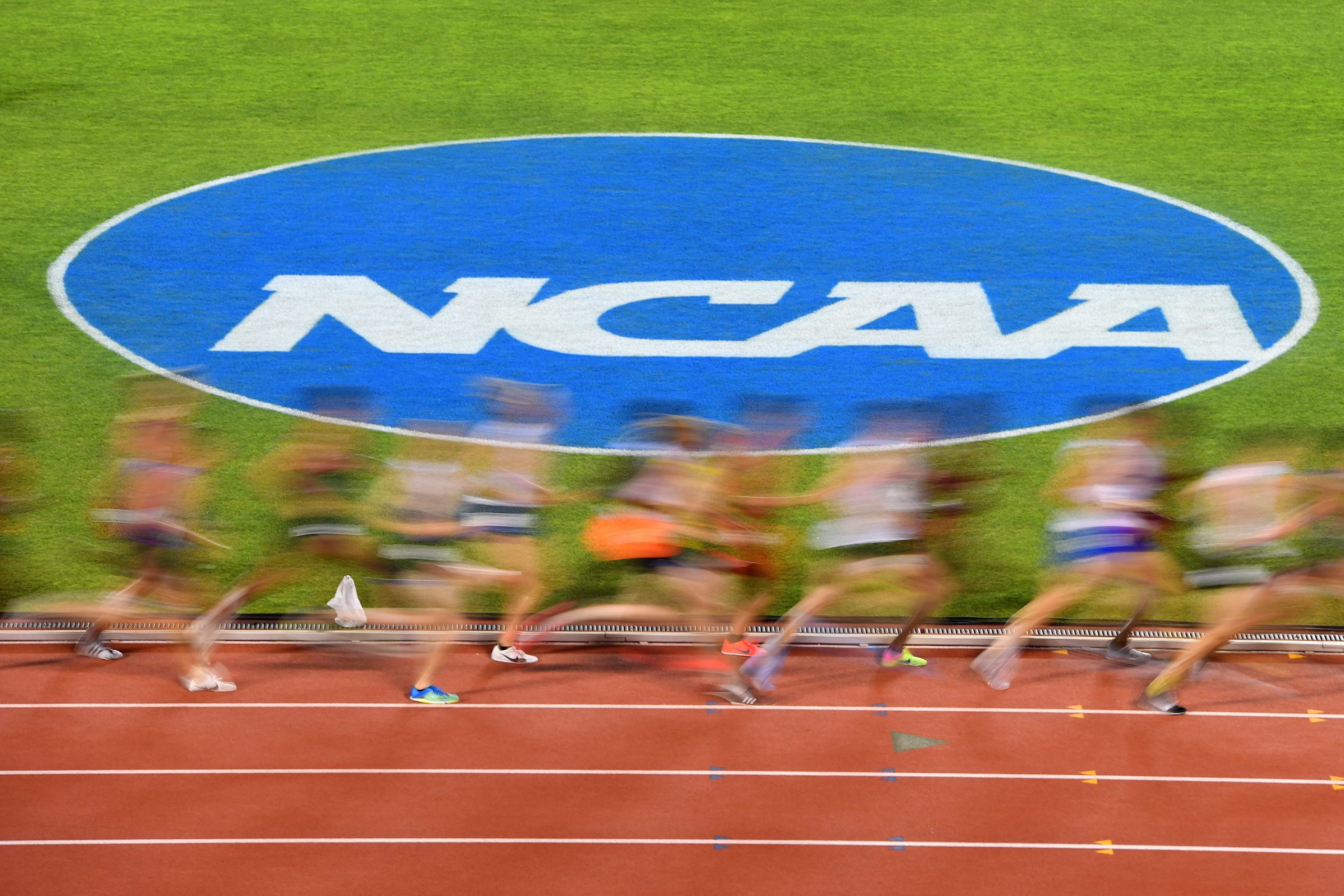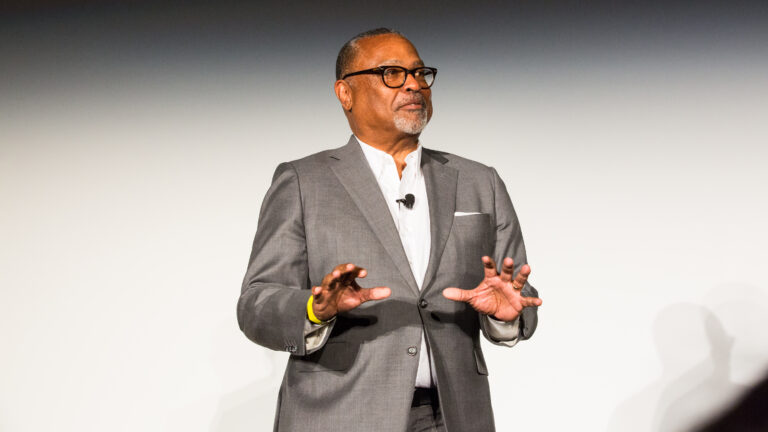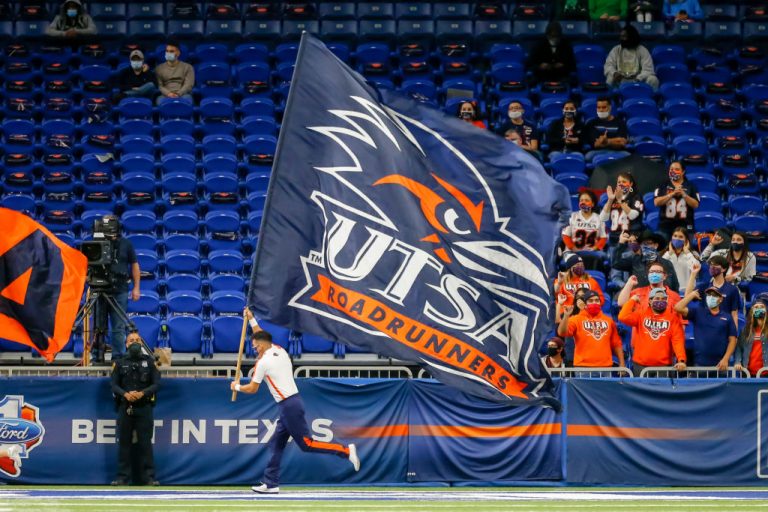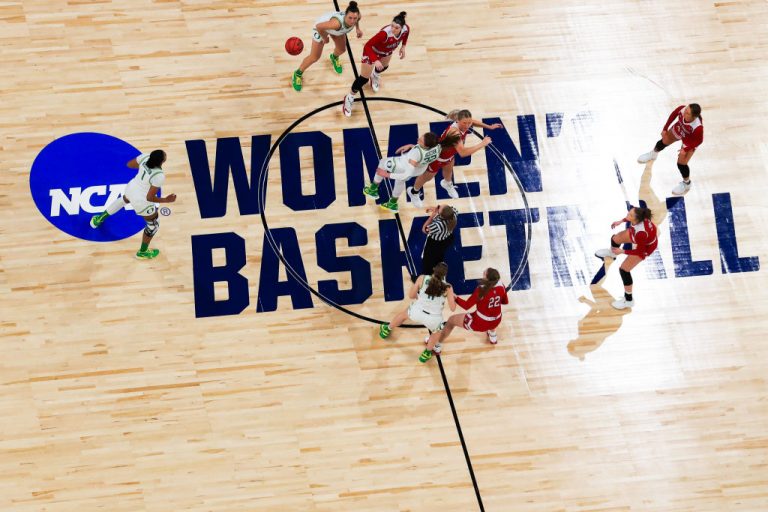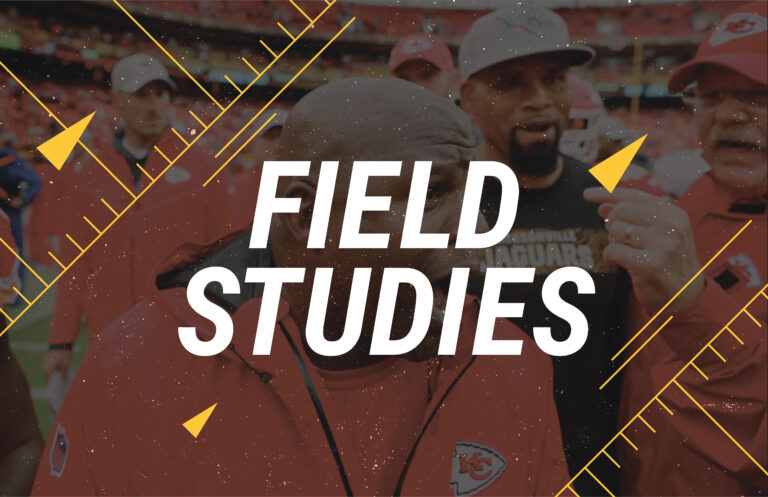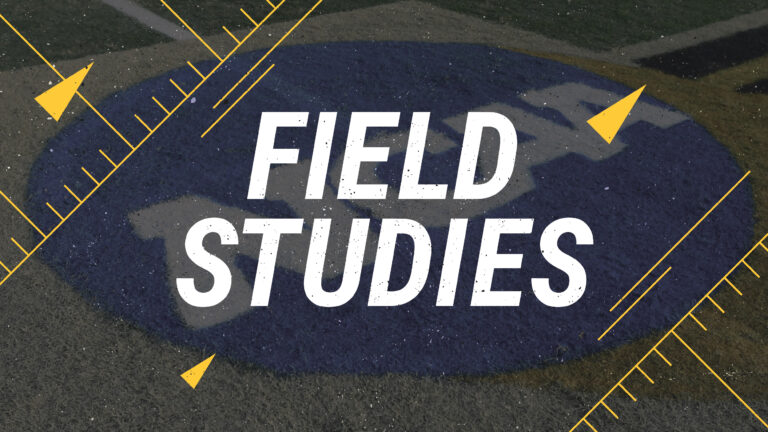Q&A: What Can We Learn From Athletic Director Hiring Data?
Why this matters
In this Q&A, Global Sport Institute researchers explain the methodology and key takeaways behind this month's Field Study: NCAA Athletic Director Hiring Criteria & Career Pathways from 2010-19.
This month's Global Sport Institute Field Study and the accompanying digital issue, "The Administration of Change," seeks to understand hiring practices in NCAA athletic departments through an intersectional lens.
"The pathways to and opportunities for college sport leadership are less robust and the educational/experiential requirements more strict for people of Color and women, especially women of Color," says Dr. Scott Brooks, the director of research at the Global Sport Institute.
Historically, college sports is examined from the perspective of how many people of Color work at a given university or whether women are integrated into the decision-making process. These metrics are used around college sports today. But to get a clearer understanding, we examined race, gender and education level together.
"Having women in the data also leads us to look at more intersections of identity traits, with various combinations of gender and race/ethnicity," says Dr. Karen Gallagher, a senior researcher at the Global Sport Institute. "For example, data on Black women ADs tell a different story than White women ADs and Black men ADs."
Drs. Brooks and Gallagher came together to explain their inspiration, methodology and takeaways for the latest Global Sport Institute Field Study:
What led the Global Sport Institute team to look into college athletic director hiring practices, and what was the primary goal of this field study?
Scott Brooks: Field Studies were initiated to get a broader look at diversity in sports leadership through a dynamic lens versus one that focuses on a static single year or season. We also wanted a deeper examination of the common pathways to leadership positions in sports. After examining nearly two decades of head coach hiring and firing in the NFL and a decade of similar data for the NCAA Power Five football teams, we pivoted to explore the patterns associated with leadership roles in college athletics. To get a true sense of the landscape, this line of research examined the education, experience, racial and ethnic makeup, and gender composition of NCAA athletic directors (ADs).
How is the data for this Field Study sourced, and what is the overall approach that the research team at the Global Sport Institute takes when conducting these studies?
Karen Gallagher: All of the data presented were gathered from publicly-accessible sources, such as news articles that report on ADs’ entrance into and exit from positions, school bios, resumes, and public professional profiles. The data include information on the race/ethnicity and gender of both hired and fired ADs. Data is collected and coded according to predetermined criteria and definitions. Our research assistants validate the data collected and ensure interrater reliability before analyses begin.
The Institute’s research team has also conducted Field Studies on coaching in the NFL and in NCAA Power 5 Football. What differences did you observe in this field study, compared to the previous Field Studies?
Karen Gallagher: The biggest difference with this field study is how women are part of the data and overall conversation. In the NFL and NCAA Power 5 Football, very few women have been hired into leadership positions, and none have broken into high enough positions to be included in our analyses (e.g. head coach, defensive coordinator). Their absence from that data is significant by itself, but we can’t analyze data that doesn’t exist.
Analyzing ADs is a different story. While a clear majority are men, enough women hold AD roles to allow us to see patterns in their qualifications, hiring, and departure. Having women in the data also leads us to look at more intersections of identity traits, with various combinations of gender and race/ethnicity.
For example, data on Black women ADs tell a different story than White women ADs and Black men ADs. In previous field studies, we couldn’t make these comparisons. We generally found that men are favored over women, and Whites are favored over BIPOC in hiring for ADs. This puts women of Color at a disadvantage for their gender and race/ethnicity.
What were the similarities?
Karen Gallagher: Educational and athletic background differences based on race/ethnicity were similar across the studies.. Black ADs are more likely to have been NCAA Division I athletes than other racial groups. Black ADs, and Black women in particular, are also more likely to have earned a PhD.
Generally, all of our field studies have shown that White men achieve their leadership positions without the advanced degrees and high-level athletic success at much higher rates than their non-White colleagues. Further, White men are hired from more varied career backgrounds, indicating a broader path to sport leadership positions for them.
Why investigate athletic director hiring practices as opposed to coaches, conference commissioners, or other leaders from the NCAA’s vast hierarchy?
Scott Brooks: Because Athletic Directors are generally the decision maker - they hire coaches. And it is reasonable to think that Athletic Directors of Color and White women might be more open to hiring diverse coaches. A focus on coaches - the supply side - shows what is in common, while also potentially leading to a “blaming the victim” - Coaches of Color are not as qualified as White head coaches. But, a focus on athletic directors might show us the structure, the openness of a particular campus and its constituents to diverse leadership. But don’t get me wrong, it would be interesting to look at conference commissioners and university presidents as well.
In this Field Study, HBCUs were included. With that data carved out, we see a change in the relative volume of incoming athletic directors in the NCAA. What does this tell us about how HBCUs are affecting broader trends in college sport?
Karen Gallagher: In an industry with low representation of people of Color in leadership positions, including Black men and women, HBCUs play a crucial role by offering a context that is historically and currently shaped by African American decision makers. A majority of university athletic departments and other sport organizations have been White led and/or owned for a very long time. That longevity can result in a culture of “the way we do things here” and an unwritten set of guidelines and criteria. This organizational culture often leads to hiring people who fit the historical mold of that organization.
Scott Brooks: In many cases it may be unintentional, but the power of an organization or institution’s history plays a role in determining who it hires, rather than who is the most qualified person for the job. HBCUs tend to have histories and cultures that value and appreciate the same differences that might violate the unwritten criteria at other organizations. This appreciation makes them an essential part of the college sport landscape that we’re trying to understand with our Field Studies.
Can you explain what a “mediating factor” is in the context of this Field Study and what it means to say that race and gender are mediating factors in athletic director hiring processes?
Karen Gallagher: A mediating factor helps explain the relationship between other factors. In this case, race/ethnicity and gender (mediating factors) help explain hiring differences. Most simply put, women and BIPOC are hired differently than White men, meaning that gender and race/ethnicity help explain the overall process. If we found that everyone across all genders and races/ethnicities was hired according to similar education level, that would be a mediating factor, because it would help explain who gets hired. That is not the case, though.
What does other research in this field tell us about why race/ethnicity and gender tend to impact candidates’ likeliness to get hired?
Karen Gallagher: There have been multiple studies and media stories that have examined the impact of race/ethnicity on hiring patterns in a variety of sports citing highly varied contributing factors. For example, in Major League Baseball, researchers have identified themes such as culture within a league or club (Hayhurst, 2015) or fan culture (Bonesteel, 2020) influencing hiring patterns. Bias and continually hiring the same pool of White head coaches are reasons cited as well (Bell, 1992).
Certainly “stacking,” the practice of relegating Black athletes to certain roles and steering them away from positions like quarterback, a traditional pathway to coaching (Brooks & Althouse, 1993). Similarly research around gender and leadership in sports has focused on a variety of factors. Researchers, such as Antunovic & Linden (2020), have explored the media role in amplifying positive stories around women’s achievement in sports leadership, thus leaving the public blind to the true inequities.
Others (Borland & Bruening, 2010) point to limited applicant pools and lack of mentorship as factors adversely impacting Black women coaching opportunities in Division I NCAA Basketball. The complex and highly varied research themes in these areas highlight that race/ethnicity and gender equity in sports are multifaceted issues that require many layers of examination, discussion, and action.
As you look broadly at the data, what are the big takeaways that you’d like individuals within college sport to take note of?
Scott Brooks: The pathways to becoming an athletic director expand and contract depending on a person’s race and ethnicity and gender. White athletic directors have a wider range of experiences and less significantly less likely to have been a D1 student athlete. The hiring criteria appears to be more narrow for people of Color and women, especially women of Color. If you are a White man, your qualifications can include an array of business, educational, and athletic roles and achievements. If you are not, your qualifications seem to have to fit a narrower, more select set of criteria to be hired for the same job. Those who hire ADs need to be keenly aware of these patterns and use that knowledge to inform how and where they look for job candidates.
Scott Brooks, PhD, is the Director of Research for the Global Sport Institute at Arizona State University.
Karen Gallagher, PhD, is the Senior Researcher for the Global Sport Institute at Arizona State University.
Visit the Global Sport Institute website or the “From Our Lab” section to learn more about our research work.
Monthly Issue
The Administration of Change
Higher education is an environment ripe for discovery, new knowledge, and innovation. However, the role of Athletic Director at university levels still reflect the commonly seen disparities between representation of race, gender, experience, and perhaps most ironically - education level.
Beyond Black and White, what are the underlying factors for the still murky ‘pipeline’ to administrative leadership in U.S. college sport?

